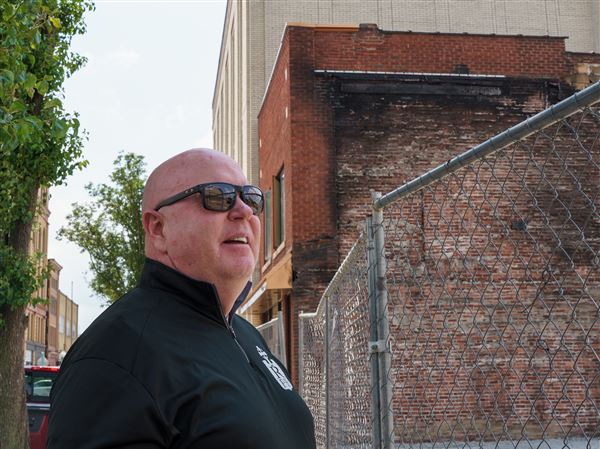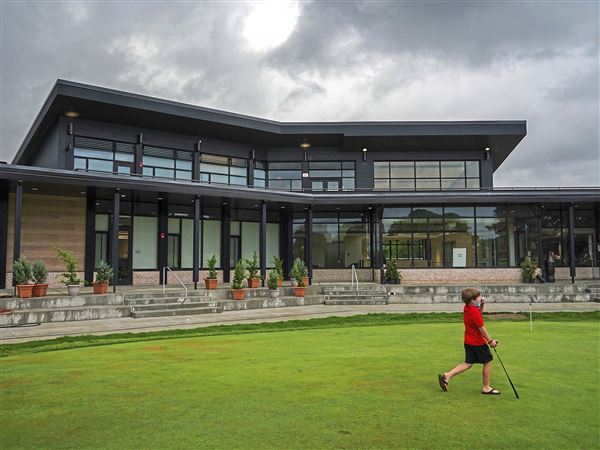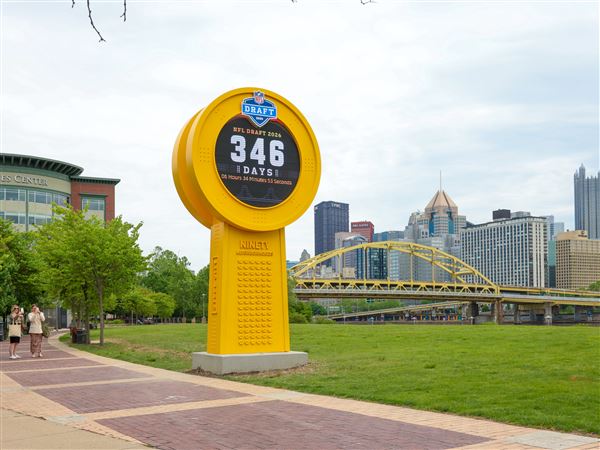HARRISBURG -- Hundreds of people walk over them every day, never noticing the century-old artwork beneath their feet.
They are, collectively, the single largest work of art in the Pennsylvania State Capitol -- the red "Mercer tiles," with nearly 400 different mosaic scenes spread out in tiles from one end of the building to the other.
And the tiles, named for artist and Doylestown native Henry Chapman Mercer, require constant care, cleaning and maintenance. Most of them have been in place since the building opened in 1906.
"They were intended to be here for the life of the building," said Christopher Ellis, a senior project manager at the Pennsylvania Capitol Preservation Committee.
The tiles are on a cyclical cleaning schedule to prevent buildup of dirt and debris; they require special attention in the winter due to the salt residue tracked in from the outside.
This past winter, with its frequent snowstorms, frigid temperatures and the accompanying salt used to keep sidewalks and driveways around the Capitol free of ice, was particularly harsh, Mr. Ellis said.
The red tiles -- which were chosen to contrast with the Capitol's white marble walls -- tell the history of the commonwealth: its flora and fauna, early Native American inhabitants, European colonization (including a tile depicting a massacre of Indians by white settlers), industrialization, major historical events, and scenes depicting the daily life of Pennsylvanians in a bygone era.
"A lot of people overlook the floor, because everybody's looking up. And up is spectacular," Mr. Ellis said, referring to the golden dome of the rotunda. "But the floor tells a story."
Among the events depicted in tile are William Penn's peace treaty with Native Americans, George Washington's crossing of the Delaware River, and the 1863 Battle of Gettysburg. Visitors can also pick out multiple Ben Franklins, native plants and wildlife from oak to elk, and tile homages to coal miners and pioneer riflemen.
A 1908 guidebook describes the work to Capitol sightseers: "The mosaics may stand for mere patches of harmonious color to the individual who walks rapidly across them, while it is only to him who pauses and studies them carefully that their full significance gradually appears."
The uneven surface of the tiles can sometimes make them treacherous for women wearing high heels. And a handful of the mosaics have been replaced due to damage. The Moravian Pottery and Tile Works that made the original tiles is still operational and has Mercer's original notes, Mr. Ellis said.
The tiles were part of what's known as the Arts and Crafts movement, an artistic push-back against the rapid industrialization of the time, said Beverly Brandt, an expert on the movement and professor emerita at The Design School at Arizona State University.
Typical of works from that movement, these tiles use autumnal colors, such as reds and oranges, are inspired by historical and nature-related themes, and are both beautiful and practical, she said.
"Mercer said, 'Machines can't produce art,' " said Charles Yeske, historic properties manager for the Bucks County Parks and Recreation Department, which owns and operates the Mercer tile works as a museum. "He considered his tiles, each and every one of them, artistic expression."
The tiles were made from Bucks County clay, processed in steam-fired brick-making machines, hand-pressed into molds and fired in kilns, Mr. Yeske said.
"Other than the steam engine running the clay-making machine, there was no real machinery involved," he said.
Mr. Yeske also noted that unlike many other contractors involved in the Capitol's construction, Mercer was never implicated in any scandal or accusation of graft related to the building.
Sen. John Gordner, R-Columbia, a member of the Capitol Preservation Committee, said he believes the tiles are one of the Capitol's most memorable works of art for visitors.
"It's a work of art that's used. It is walked upon, trod upon, every day. It speaks to the durability of it that it is in such good shape," Mr. Yeske said.
Mercer, who was born in 1856 and died in 1930, was also an archeologist and a founding member of the Bucks County Historical Society. After apprenticing with to a Pennsylvania German potter, in 1898 he opened the Moravian Pottery and Tile Works, which is still operated as a "living history" museum, offering daily tours.
First Published: June 1, 2014, 2:41 a.m.















